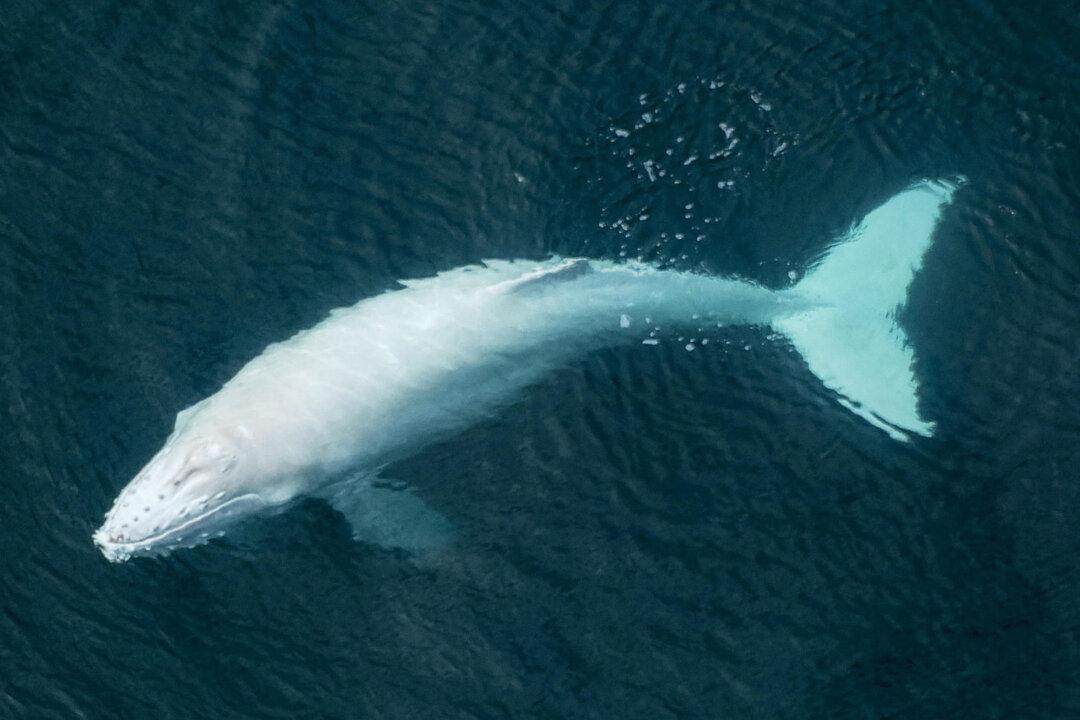A pilot flying over Costa Rica snapped a once-in-a-lifetime photo series when he spotted a rare sight from the cockpit, an albino humpback whale calf swimming with its mother.
Felipe Chavez, 29, is a pilot of 11 years, flight instructor, and hobby photographer from Costa Rica. He was flying over the Pacific coastline of his home country on Oct. 2, near Nosara, when a flash of white appeared under the surface of the ocean.





